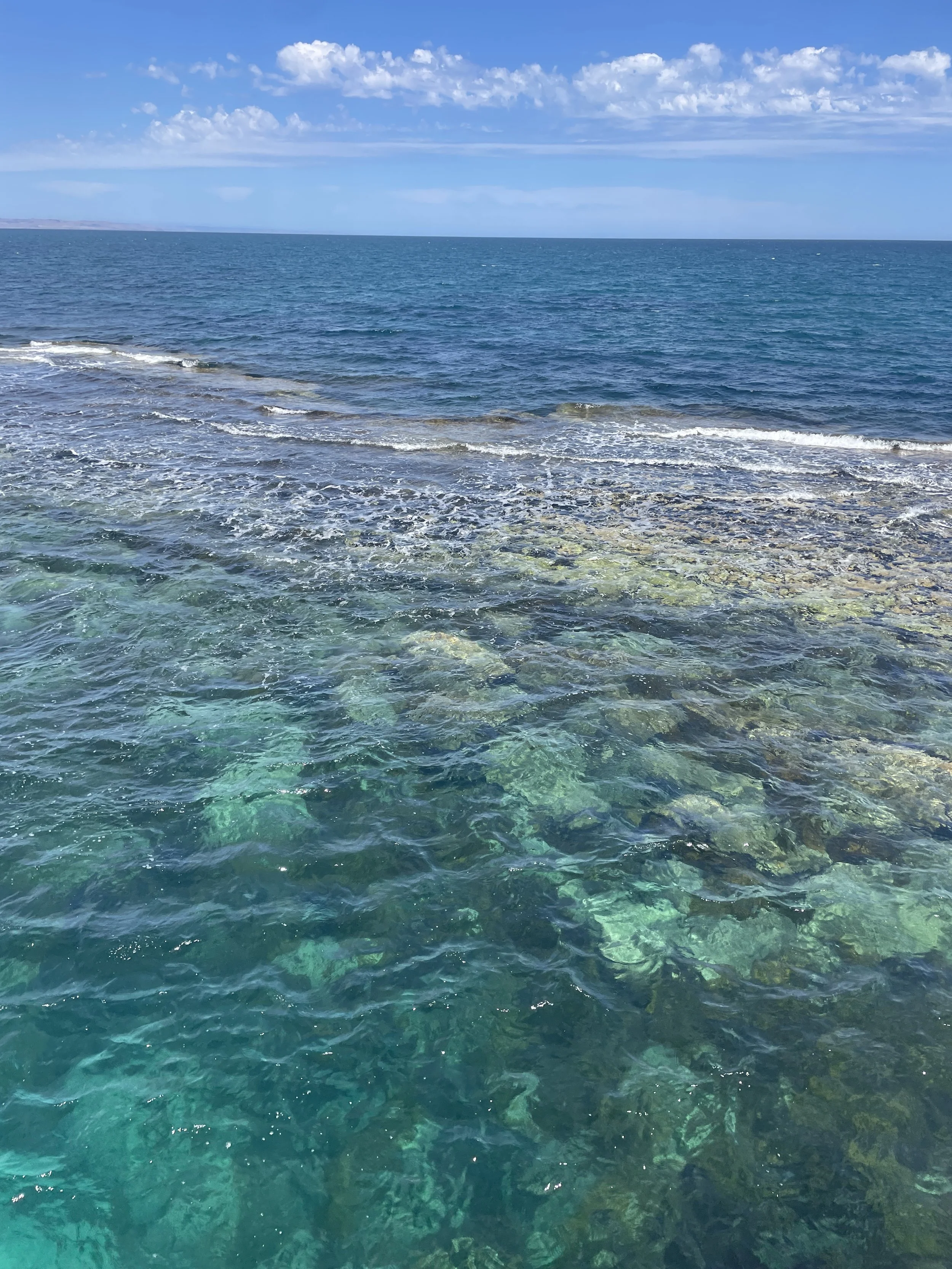Would you know what to do in a shark attack?
So this happened - 10 November 2023. It was a day like any other, except it was hot. 40 degrees to be exact. I had finished work and headed down to my local beach, Port Noarlunga, Adelaide, South Australia. I love to swim there and do, almost daily. There really is nothing better than strolling down to the end of the jetty, walking down the steps to the platform where the scuba divers set off on their ocean journey and going for a swim.
On this day, as I took my usual walk to the jetty, I see three news crews, a helicopter circling and the life saving boats out. I thought to myself, “what’s going on?” Perhaps they were here for the weather cross at 5pm. I kept on walking down the jetty and noticed a lot of big jellyfish swimming around the platform. They were as big as basketballs. I had had a few close encounters with jellyfish and on this day almost swam into a couple of them. This cut my swim short. With my towel in my hand, airdrying from the heat, I walked down the jetty, only to be stopped by a stranger who commented, “gee, you’re swimming in the water where less than an hour ago before a shark attacked a lady off the reef? Didn’t you see the news crews and the chopper?” So that happened. And it happened at my local beach. A few hundred metres from where I lived. I asked the guy if she was ok. He said it was reported she was in a serious but stable condition. He said, “I’d have no idea what to do in that situation”. And it made me think, would you know what to do if you were with someone who got attacked by a shark or how to survive a shark attack?
Tips to providing first aid to a shark attack victim
In Australia, it’s something that occurs, far too often. So, here are our tips on how to provide first aid to a shark attack victim. Let’s hope you never have to use them, but it’s good to know them!
First things first, assess the situation and ensure your safety.
If it’s a shark attack wound and there's bleeding involved (and let's face it, there will be), it's important to control it as quickly as possible. Life-threatening bleeding is serious, so follow these guidelines to managing it.
Ideally you want to use standard precautions like gloves, but realistically, in that moment, at the beach, having access to that is pretty slim
Lie the person down, apply direct pressure using the Direct Pressure Method and call for an ambulance. The Direct Pressure Method is about applying firm, direct pressure using your hands or a pad over the bleeding point. If the bleeding continues, apply a second pad and a tighter bandage over the wound.
Remember that controlling the severe or life-threatening bleeding takes priority over airway or breathing issues. Not to say that it’s not a threat to the person’s life but in that moment the biggest threat of all is life-threatening bleeding
If there is severe, life-threatening bleeding from a limb that can’t be controlled by pressure, apply an arterial tourniquet above the bleeding point, but only if you’re trained to do so and one is available
If there is severe, life-threatening bleeding from a wound site not suitable for a tourniquet or from a limb when a tourniquet is not available or has failed to stop the bleeding, apply a haemostatic dressing but only if trained in its use and one is available. A haemostatic dressing is a specialised dressing used to control bleeding
If the person is unresponsive and not breathing normally then follow DRSABCD.
Providing first aid on a shark attack victim requires quick thinking and level-headedness. So stay calm and remember that even though sharks may be scary creatures of the deep blue sea, we humans have our own superpowers when it comes to helping one another out in times of need!
Resources
Beach Safety Guide
Stay safe in the water
The information provided in this blog offers general insights only. It is important to note that this content is not intended to serve as medical advice and if you are experiencing a medical emergency, please call 000 immediately.

